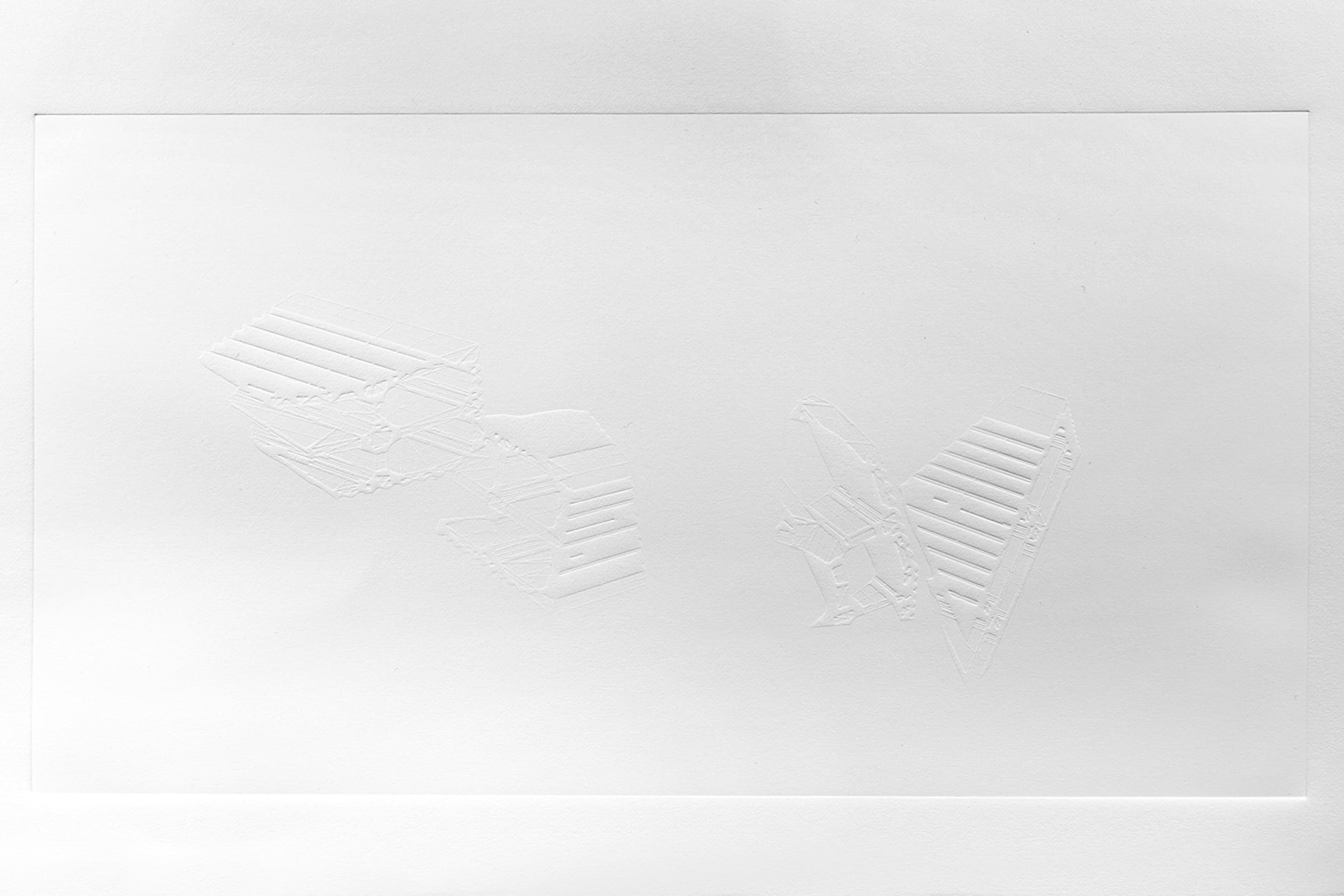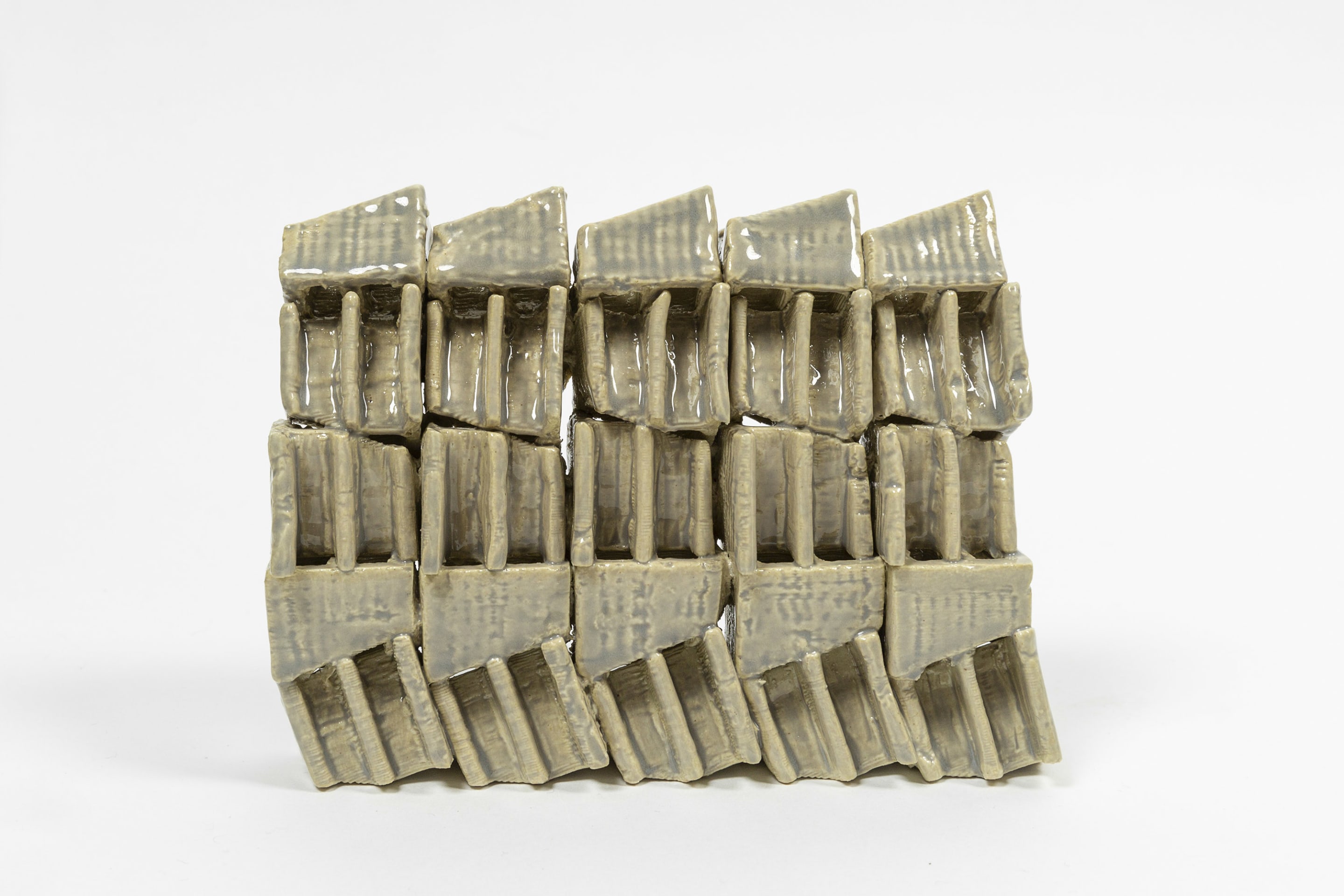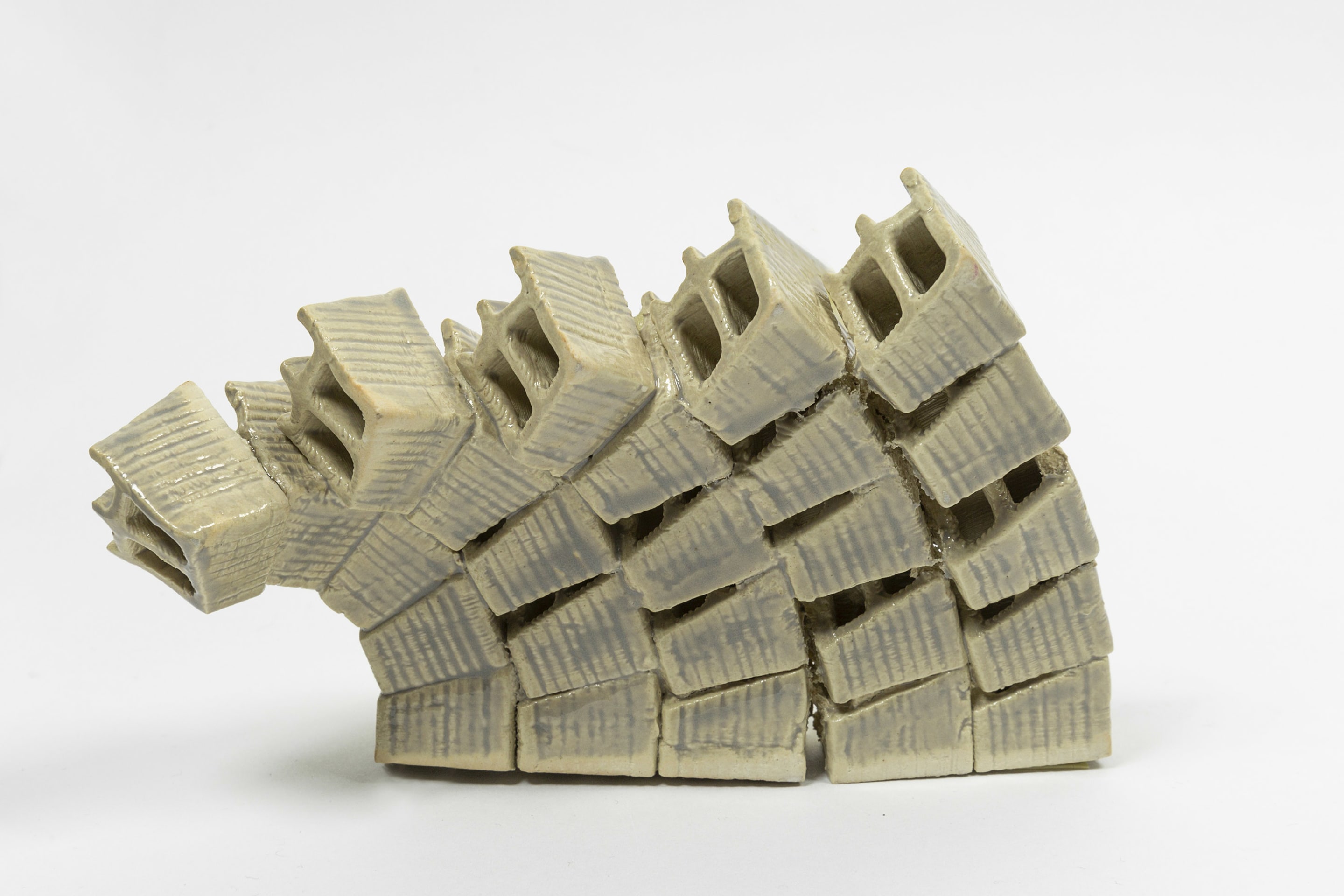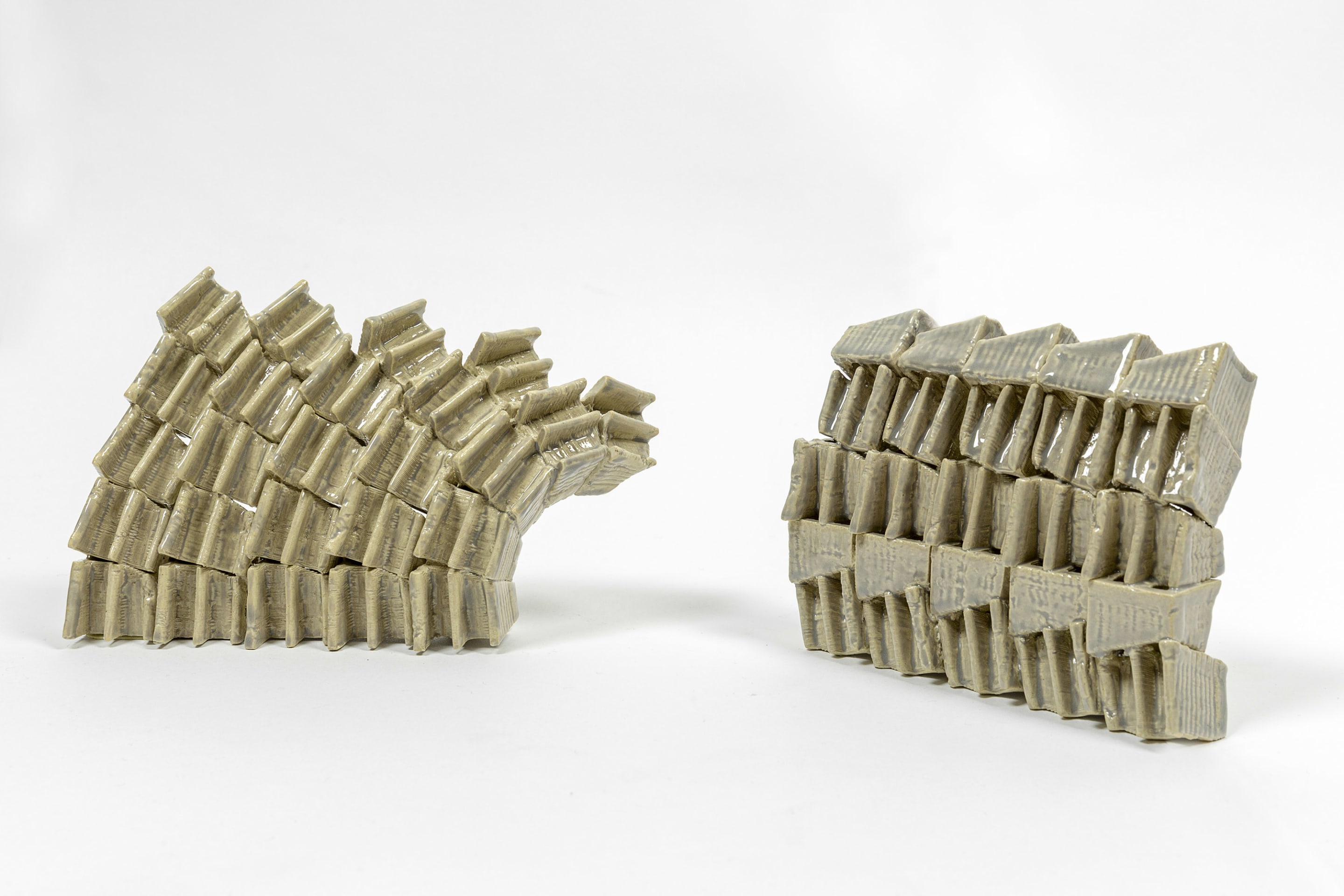Screening Room: Nazgol Ansarinia
We are pleased to focus on the work of Nazgol Ansarinia (Teheran, 1979) in this fifth chapter of Screening Rooms. Ansarinia examines the systems and networks that underpin her daily life. She interrogates and recasts everyday objects and events to tease out their relationship with contemporary Iranian society. In her research she has embraced several media such as video, 3D printed models, sculpture, drawing, graphics and has covered subjects as varied as security policy, control/discipline, memories associated with lived spaces, urban development in Tehran – with its demolition process, patterns of Persian carpets and mirror mosaics. This Screening Room presents an array of Nazgol Ansarinia's conceptual subjects matters.
This work is the second of two videos shot by Ansarinia on the same concept, the rapid and spreading phenomenon happening in Teheran related to demolitions and quick rebuilding. The title stems from the sentence “demolishing buildings, buying waste” sprayed over the walls of low-rise buildings in the Iranian capital. “The fast pace of demolition quickly erases the physical features of the city, while the gradual process of building gets our eyes slowly used to the new spatial forms – by the time a building is finished we can no longer remember what it was like before it existed. This is how Tehran has been harshly but methodically changing” Ansarinia wrote.
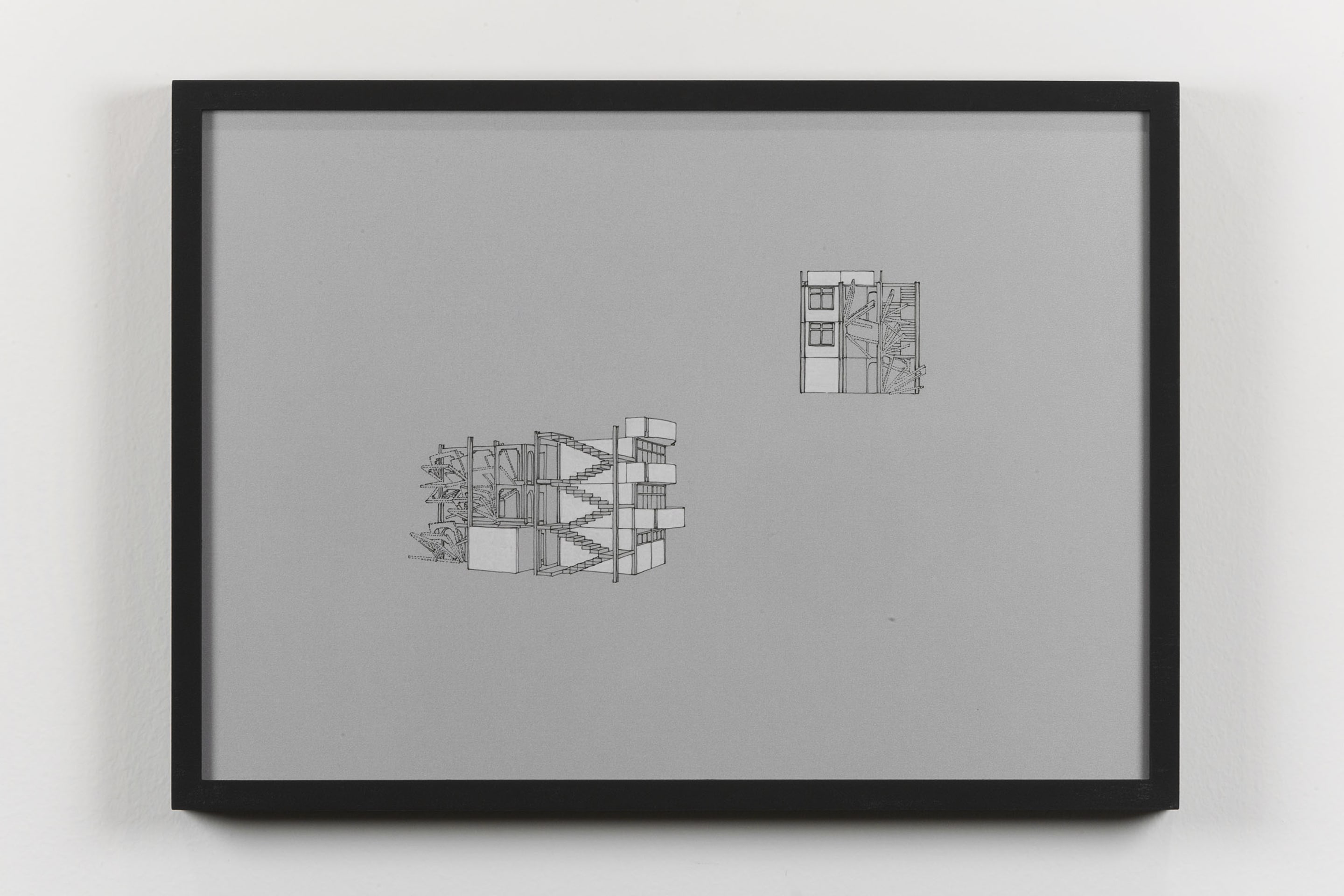
Ink and marker on paper
29,5 × 42 cm; 31,5 × 43,5 × 3,5 cm framed
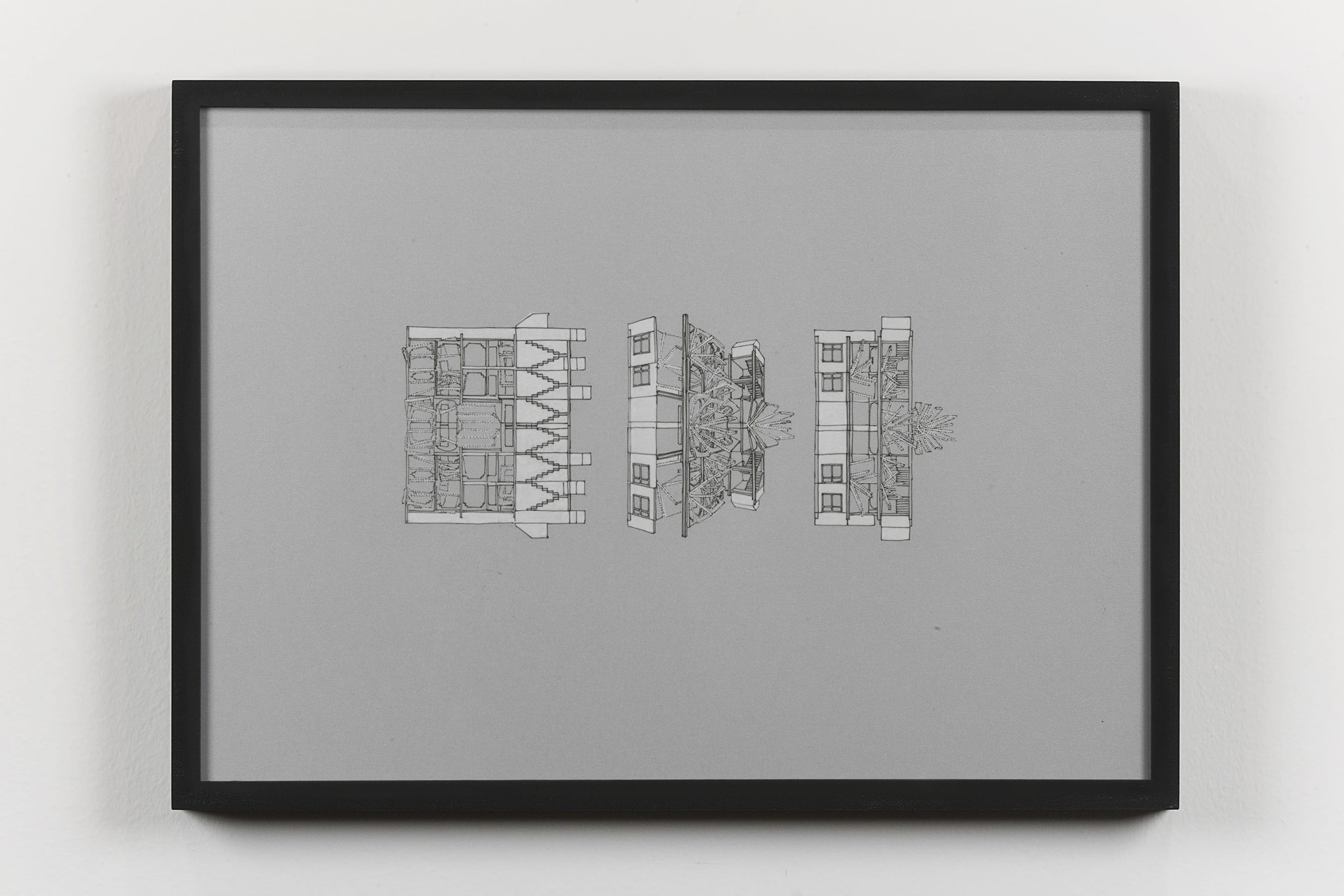
Ink and marker on paper
29,5 × 42 cm; 31,5 × 43,5 × 3,5 cm framed
These works are part of a body of drawings in which Ansarinia focuses the attention of her simulations and studies on demolition as opposed to construction. These are part of the conceptual and visual aspects that led her to the videos on demolishing.
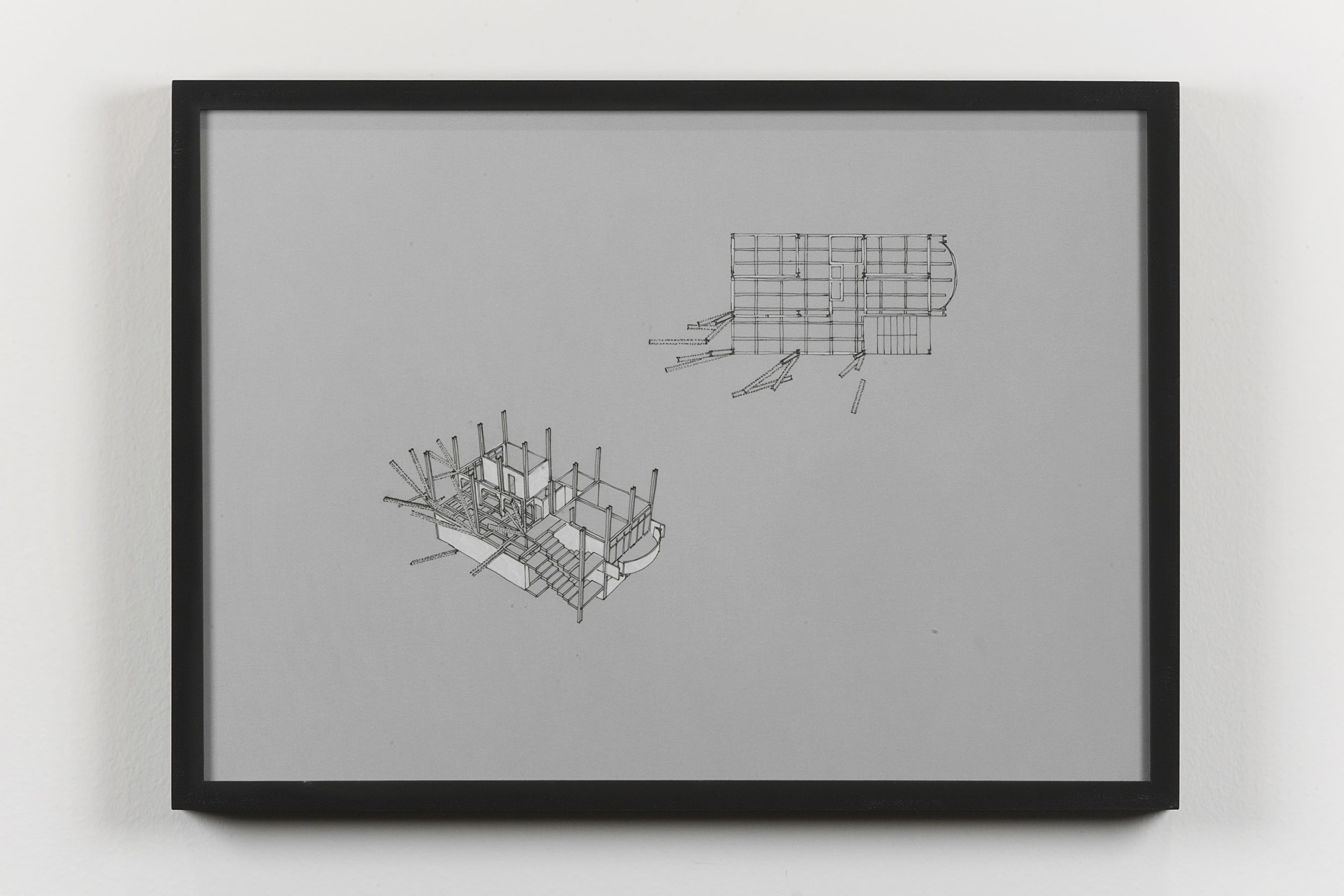
Ink and marker on paper
29,5 × 42 cm; 31,5 × 43,5 × 3,5 cm framed
This work is an attempt to capture the moment between demolition and creation. It illustrates the notion that for each new building there is also an equal amount of material that is being discarded. The rubble that is carried away in the video Fragment 2, Demolishing buildings, buying waste is here symbolically reinstated as a new portion of a potential new construction. It is an attempt of it. This allows us to observe the process of demolition as a kind of reverse engineering. At the same time this is a way of extracting information and analyzing the socio-economic conditions of Teheran.
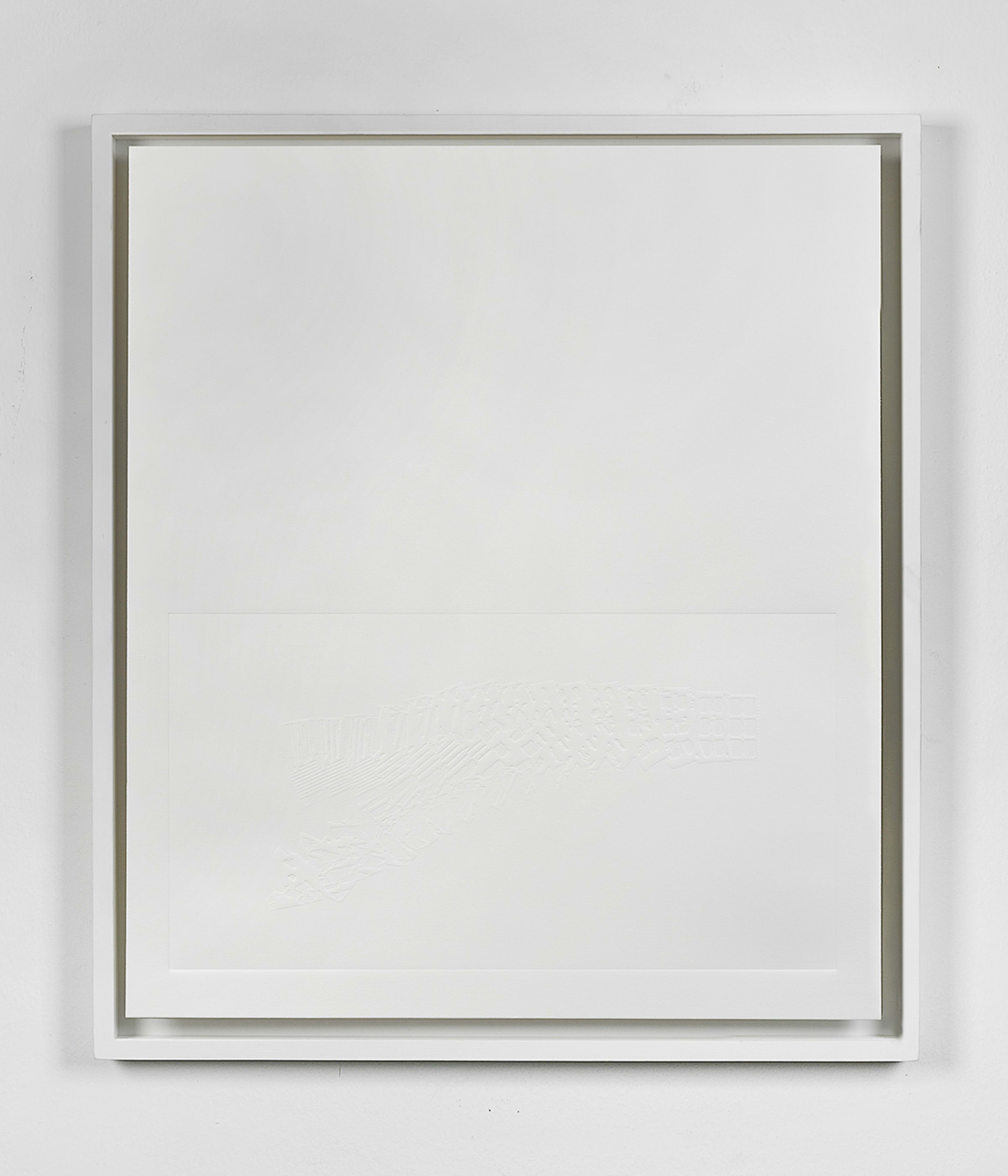
blind print
50 × 43 cm; 54 × 47,5 cm framed
Ed. 30 + 6 AP
What is invisible is all the demolitions that open up spaces for deconstructions. I am looking at this as a cycle, as a never-ending cycle.
– Nazgol Ansarinia
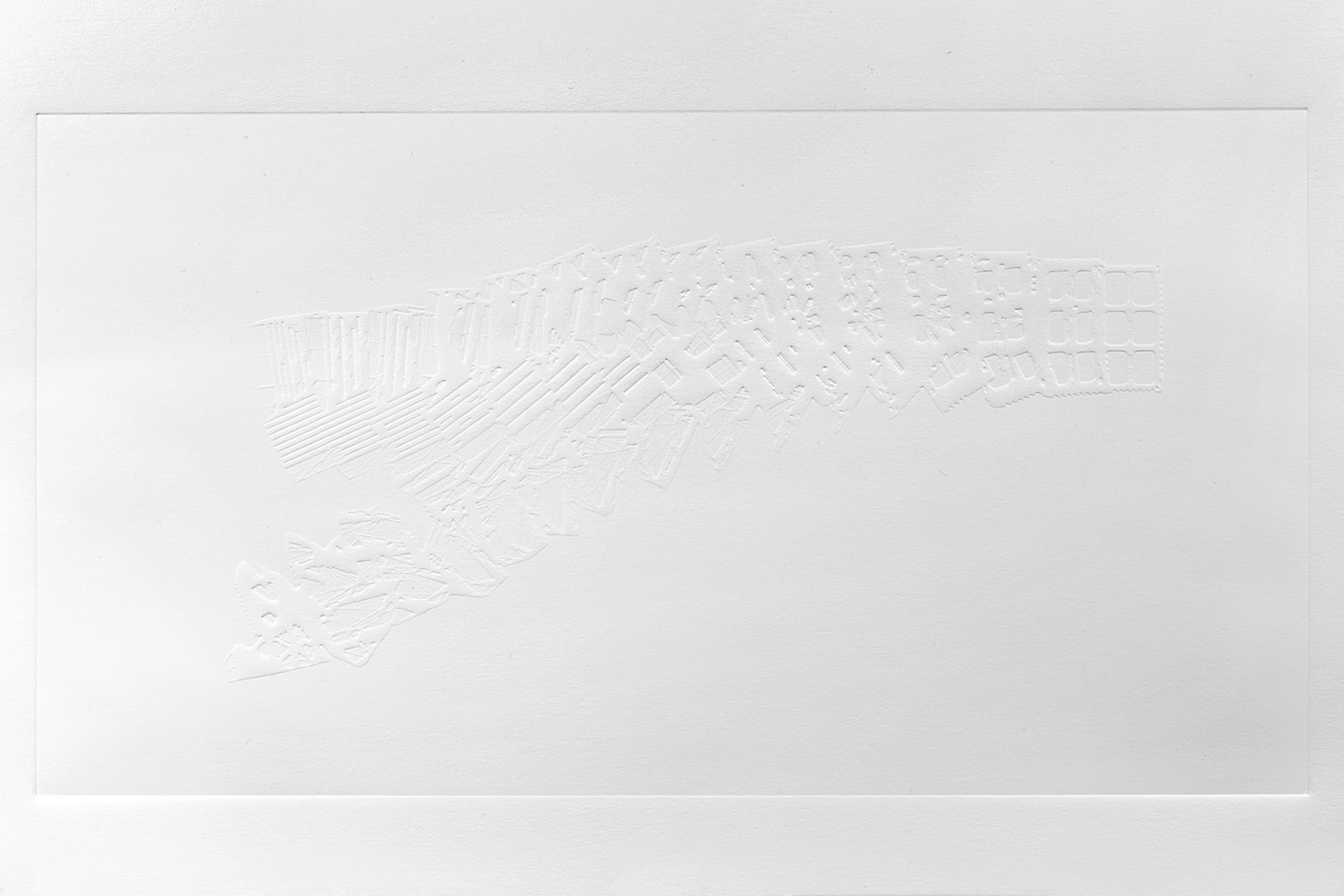
These two blind prints are the translation of concepts that underpin the video, the drawings and the sculpture. The act of demolition and reconstruction can be considered as a blank page from which new conceptual aspects will arise.
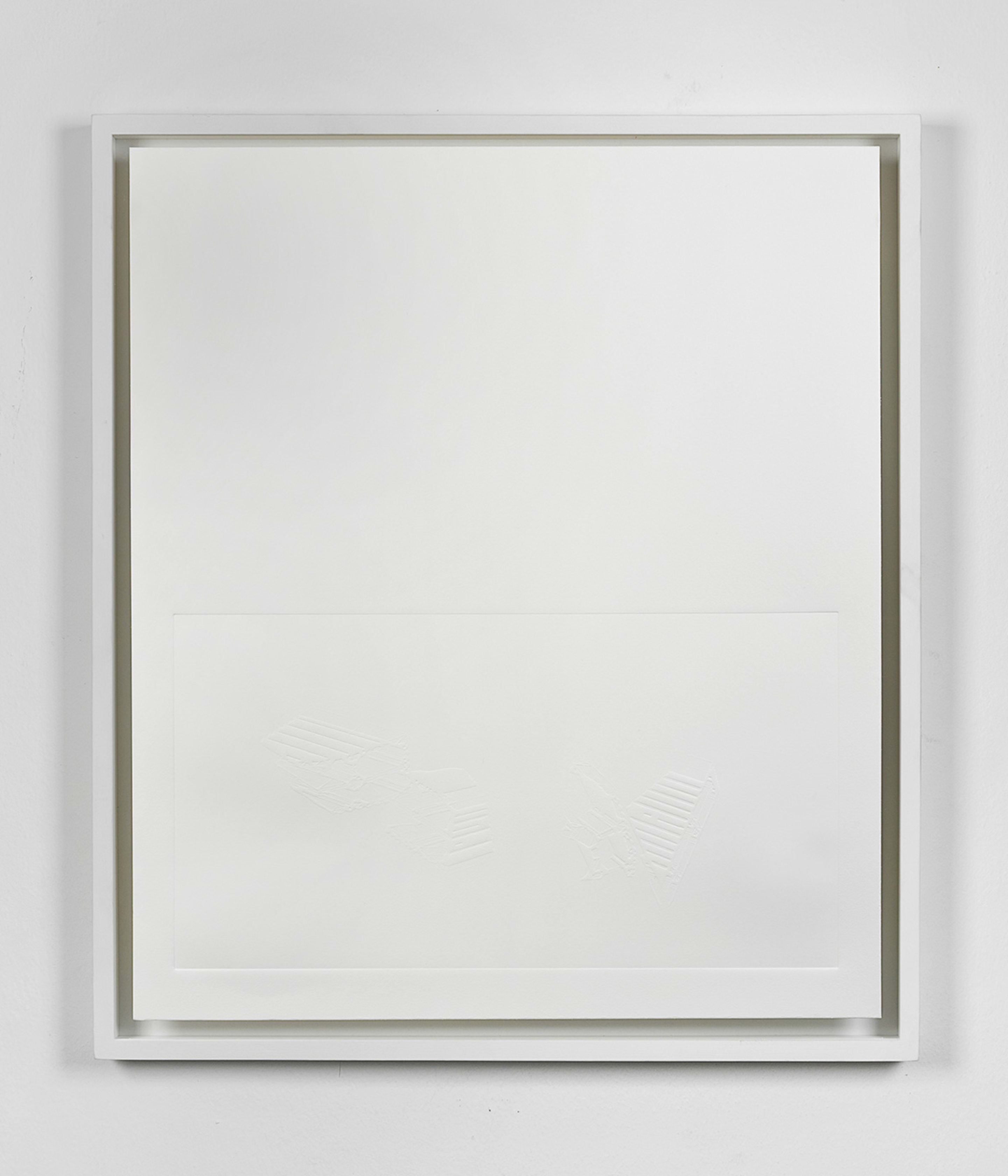
blind print
50 × 43 cm; 54 × 47,5 cm framed
Ed. 30 + 6 AP
